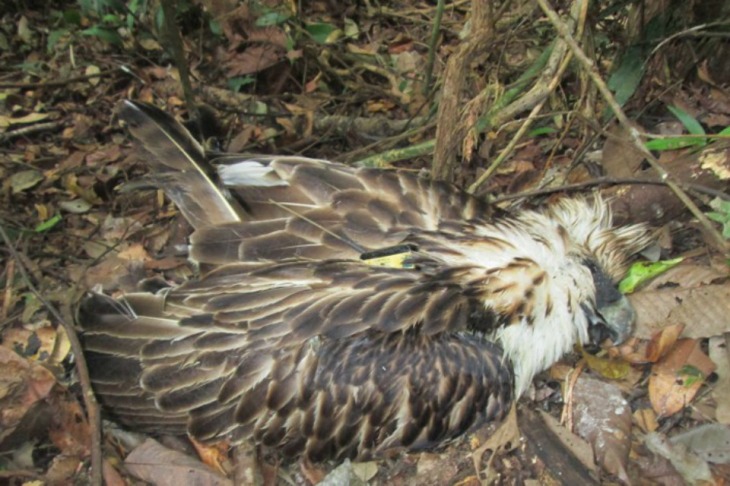24th February 2016;
An endangered Monkey-eating Eagle (Pithecophaga jefferyi) which was released into the wild under a conservation programme is now fighting for survival after being shot, a Philippine conservation group said Wednesday.
The metre-long (3.3-foot) raptor, which preys on Macaques (Macaca fascicularis) and other small animals sharing its forest habitat, was shot at the weekend.
One man surrendered to the Philippine Eagle Foundation in Davao city on Mindanao island on Sunday and also handed over the injured bird, the Philippine Eagle Foundation said in a statement.
He, along with a second man, was turned over to the police. Both are under arrest.
“The wounded Eagle is under observation but I cannot assess its survival chances at this time,” the foundation’s curator Anna Mae Sumaya told AFP.
The foundation said the shooting shattered the bird’s right wing. It was unclear if the six-year-old male would ever fly again.
Killing Monkey-eating Eagles is punishable by a 12-year prison term and a one million-peso ($21,000) fine, while wounding the species incurs a four-year prison term and a half million-peso fine.
The bird is famed for its elongated nape feathers that form into a shaggy crest. Its two-metre wingspan makes it one of the world’s largest Eagles.
It is found nowhere except the Philippines, where it is the country’s national bird. About 600 of them are thought to be left in the wild.
Source: AFP
Philippines: Endangered Monkey-eating Eagle shot and wounded in Philippines
